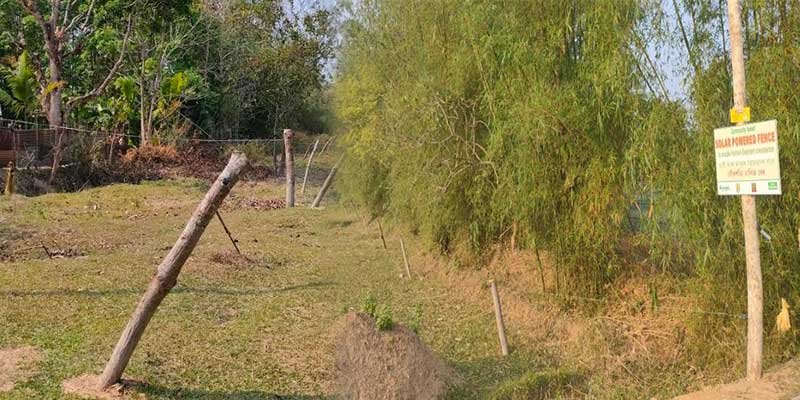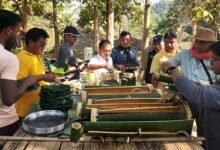Assam received another solar fence to combat human elephant conflict
Solar fence installed at HEC hotspot in Goalpara for coexistence with elephant

GUWAHATI- Premier researched –based biodiversity conservation organisation Aaranyak has installed a 4-km stretch of community-operated solar fence to mitigate human-elephant conflict (HEC) at Bordol village (Deonapara Part 2) in Goalpara district of Assam with support from US Fish and Wildlife Service.
The area is highly a hotspot of HEC where the indigenous villagers have found the going too tough in view of frequent extensive foraging resorted to by invading herds of wild elephants in the cropland that provides livelihood for the agriculture dependent community.
Such swoops by elephants often provoke anger among the community and leads to severe human-elephant conflicts that harm the lives and property of the locals as well as the elephants.
The solar fence was inaugurated on Thursday by the Additional Deputy Commissioner of Goalpara, Ranjit Konwar in a ribbon cutting ceremony arranged by the solar fencing management committee at Bordal village under Lakhipur range revenue circle in presence of 65 community members, representatives from the Assam Forest Department, officials from the district administration. Dr Bibhuti Prasad Lahkar, Anjan Baruah, Bijoy Kalita and Subhas Rabha from Aaranyak attended the inauguration programme graced by noted social worker of the area Sashi Bhusan Brahma.
“The solar fence, which facilitates coexistence between the locals and wild elephants that often rummage crops, needs to be properly maintained to ensure its longevity. Assam’s human elephant conflict zones, where solar fences have been installed, are great examples of such coexistence,” said ADC Ranjit Konwar.
“In addition to the solar fence, which is very important to protect the crops, lives, and property of locals, we also emphasise the need to restore elephant habitats. These measures will facilitate coexistence between elephants and human beings given that elephants range widely”, said Dr Bibhuti Prasad Lahkar, senior scientist of Aaranyak.
“This fence has a simple operation mechanism – it is powered as soon as the dusk falls. Once the wild elephants which try to enter the village, come in contact with the powered fence they are repelled by the high-voltage but micro-seconds pulses of electric shocks. As a result, human lives, property and crop of villagers remain protected,” said Dr Lahkar.
The Range Officer Dhruba Dutta said, “For elephants and human beings to live in harmony, we need to stress the importance of forest regeneration and fodder plants”.
Besides reducing economic losses, such solar fences greatly enhance people’s social and economic status. Wild elephant herds are a common threat during crop season when the village menfolk are forced remain outside at night guarding the standing crop. People’s health and social lives are severely stressed by prolonged sleep deprivation.
“Villagers from HEC hotspot at Bordol can sleep peacefully at night. The peaceful ambience will reduce villagers’ hostility towards wild elephants and facilitate human-elephant coexistence,” said Anjan Baruah, a senior official of Aaranyak.
Aaranyak has so far installed about 96 kilometres of such community operated stretches of solar-powered fences at 16 HEC hotspots across Assam.
Asian elephant is an endangered species and now living in severe stress due to anthropogenic pressures. Assam’s forests are quality habitat for Asian elephants. According to the census of 2017 census, Assam has 5719 wild elephants, the second highest population in India after Karnataka.
A highly intelligent and gentle creature, elephants need a huge area to migrate for food and water. Shrinking and fragmentation of elephant habitats is causing human-elephant conflicts in Assam. As most of Assam’s ethnic communities live in forest fringe areas, elephants frequently stray into their residential settlements and cropland that leads to the conflict. But, these solar fences are, hopefully, a step into the direction of a peaceful coexistence of wildlife and humans, which we so desperately need.









